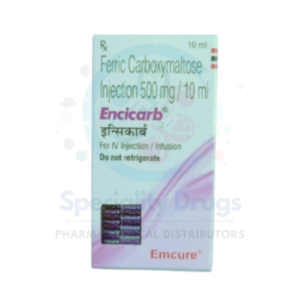What is ES-PACLI 260 MG?
ES-PACLI 260 MG is an anticancer injection containing Paclitaxel 260 mg as its active ingredient. Paclitaxel is a taxane-class chemotherapy drug that works by stopping the growth and spread of cancer cells. It is given intravenously (IV) by a trained healthcare professional.
What is the Use of ES-PACLI 260 MG?
ES-PACLI 260 MG is prescribed for the treatment of various cancers, including:
-
Breast cancer
-
Ovarian cancer
-
Non-small cell lung cancer (NSCLC)
-
Kaposi’s sarcoma (related to AIDS)
It may also be used in combination with other chemotherapy agents depending on the cancer type and stage.
Benefits of ES-PACLI 260 MG
-
Inhibits cancer cell division and slows tumor growth.
-
Effective as part of first-line or second-line therapy for certain cancers.
-
Can be combined with other anticancer drugs for better treatment outcomes.
Side Effects of ES-PACLI 260 MG
Common side effects:
-
Nausea, vomiting
-
Hair loss (alopecia)
-
Low blood cell counts (anemia, low platelets, low white cells)
-
Fatigue, weakness
-
Joint or muscle pain
Serious side effects (seek medical care):
-
Severe allergic reactions (breathing difficulty, swelling, rash)
-
Numbness or tingling in hands/feet (neuropathy)
-
Heart rhythm changes
-
Severe infection due to low white blood cell count
Important Notes
-
Administration: Given only by a doctor or oncology nurse through IV infusion, usually over 3–24 hours.
-
Precautions: Blood counts and liver function tests are required before and during treatment.
-
Pregnancy & Breastfeeding: Not recommended during pregnancy or breastfeeding unless specifically advised by a doctor.
-
Storage: Keep vials in a refrigerator (2–8 °C), away from light. Do not freeze.
1. What is ES-PACLI 260 MG used for?
It is an anticancer injection used to treat breast cancer, ovarian cancer, non-small cell lung cancer, and Kaposi’s sarcoma.
2. What is the active ingredient?
Each vial contains Paclitaxel 260 mg, a chemotherapy medicine from the taxane class.
3. How does Paclitaxel work?
It stops cancer cells from dividing by stabilizing microtubules, which helps slow or halt tumor growth.
4. How is ES-PACLI 260 MG administered?
Only by a trained doctor or oncology nurse as an intravenous (IV) infusion, usually over 3–24 hours.
5. How often is the treatment given?
The schedule depends on the type of cancer and treatment plan, typically once every 3 weeks or as prescribed by the oncologist.
6. Do I need any tests before starting?
Yes. Blood counts and liver function tests are required before each cycle to ensure it is safe to continue treatment.
7. What are the common side effects?
Nausea, vomiting, hair loss, fatigue, low blood counts, and joint or muscle pain are common.
8. What serious side effects should I watch for?
Severe allergic reactions, numbness or tingling in hands/feet (neuropathy), irregular heartbeat, or signs of infection (fever, sore throat).
9. Will I lose my hair?
Yes, temporary hair loss (alopecia) is common, but hair usually grows back after treatment ends.
10. Can ES-PACLI 260 MG be used during pregnancy or breastfeeding?
No. It can harm the unborn baby and is not recommended during breastfeeding.
11. Can I take other medicines during treatment?
Tell your doctor about all medicines, supplements, or herbal products, as some (like certain antifungals or antibiotics) can interact with Paclitaxel.
12. Is it safe to drive after an infusion?
If you feel dizzy, tired, or weak after treatment, avoid driving or operating machinery until you feel well.
13. What if I miss a scheduled dose?
Contact your oncologist immediately to reschedule. Do not attempt to take the medicine on your own.
14. How is the drug stored?
Keep vials refrigerated at 2–8 °C, protected from light. Do not freeze.
15. Does ES-PACLI 260 MG cure cancer?
It does not guarantee a cure; it aims to control cancer growth, shrink tumors, and improve survival outcomes.






Reviews
There are no reviews yet.